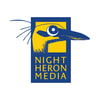|
This is it. You’ve finally decided that you’re going to do it; you’re going to write a book. So, you’ve got an idea, a concept, maybe even a flicker of excitement. But there’s one last thing you’ve got to ask yourself: What makes a book successful?
0 Comments
The first question every aspiring writer ponders over – right after asking how to use a semicolon – is how much to expect from selling their first book. The answer, though I wish I could say differently, is a tragically nebulous “it depends.”
While we’d all like a solid answer, writing isn’t like working a nine-to-five job where the salary is solidly established. Most writers enter the literary field because they have a passion, a story inside them that they’re itching to get onto the page. But how much can passion pay? Let’s break it down. So you've finished your manuscript and can't wait to send it off. You've mastered your story, checked for typos, and decided which agents and publishers to contact. That just leaves one more step: formatting. However boring it may sound, correct formatting is essential for any prospective author. Read on for some basic how-tos and tips for formatting your manuscript.
So you’ve got an idea for a nonfiction book. Congrats! You might find yourself wondering where to start or how to kick off your manuscript, as things in the nonfiction world are a bit different.
If you plan on publishing your work, most publishers and agents request book proposals for nonfiction pitches. Not familiar with this term? Read on for a brief guide on nonfiction book proposals. The publishing world is daunting. How do you navigate contracts, promotions, and events while also producing your best work? Even seasoned authors struggle to find balance.
But don't worry; we’ve compiled a list of the biggest mistakes new authors make. Avoid these common missteps and you’ll have that much more time to work on what really matters: your writing! Querying can be one of the most daunting parts of the publishing process, whether you’re a new author or a seasoned author looking for a new agent. Even when you have an agent, you still have to wait for them to send your manuscript out on submission, which isn’t necessarily a guarantee that it’ll be published.
While these two parts of the publication process are quite different, this is true for both: the first pages of your manuscript are critical and can make or break your manuscript’s success. So how do you, as an author, know if the beginning of your manuscript is effective enough to make it through the submission pile? Read on to find out. |
Categories
All
Archives
March 2022
|
|
Help preserve our history and share our stories through the book and media arts by making a tax-deductible donation today.
Night Heron Media is a 501(c)3 non-profit corporation registered in Texas.
|
Copyright © 2024 by Night Heron Media








 RSS Feed
RSS Feed